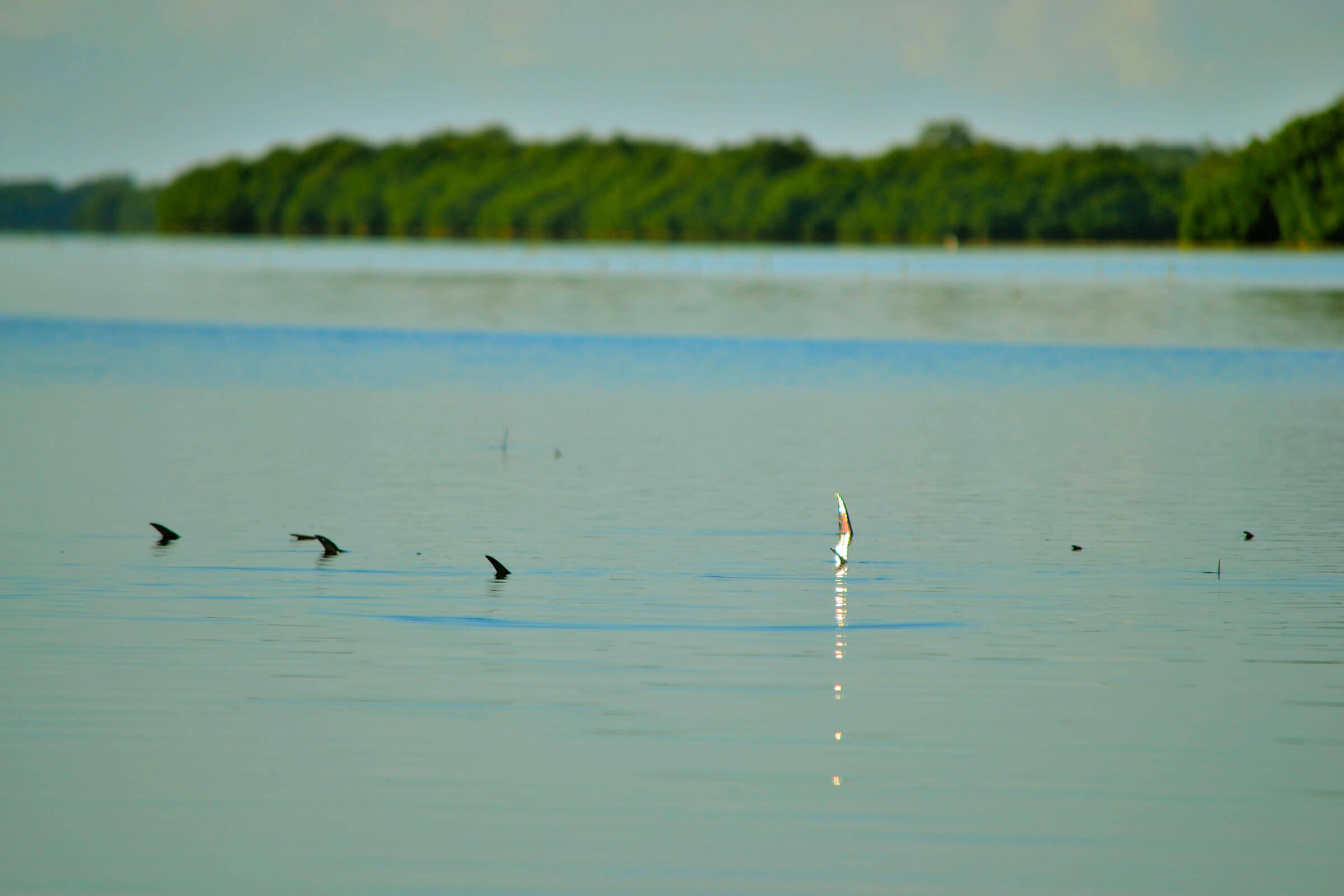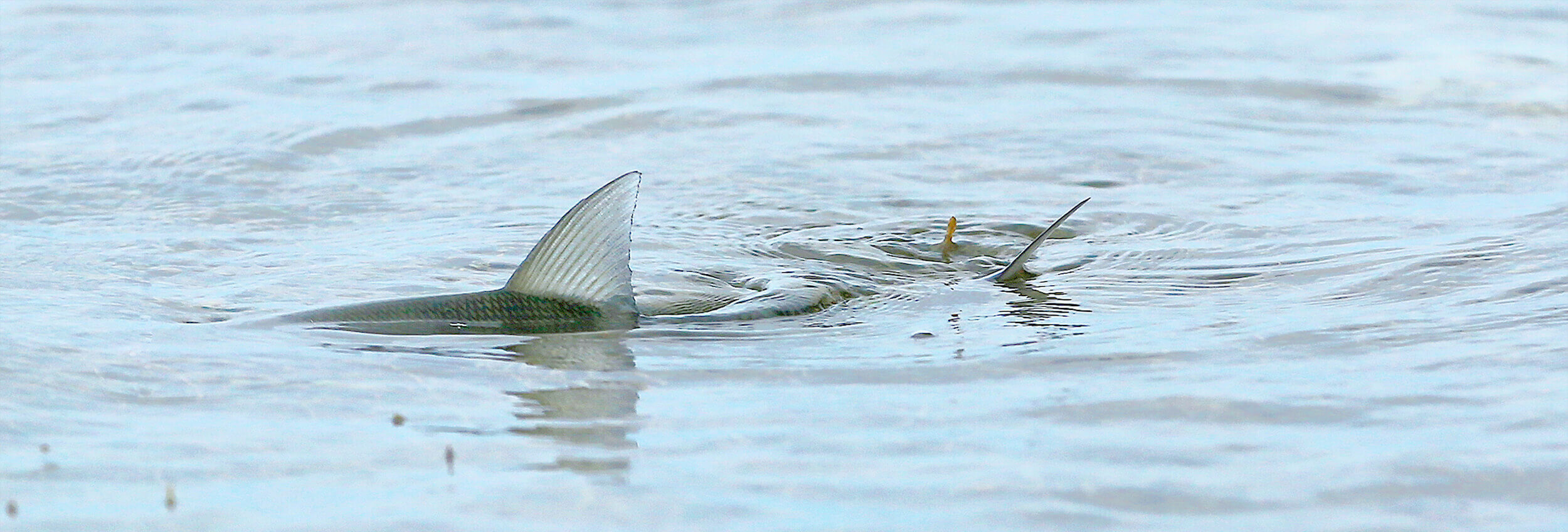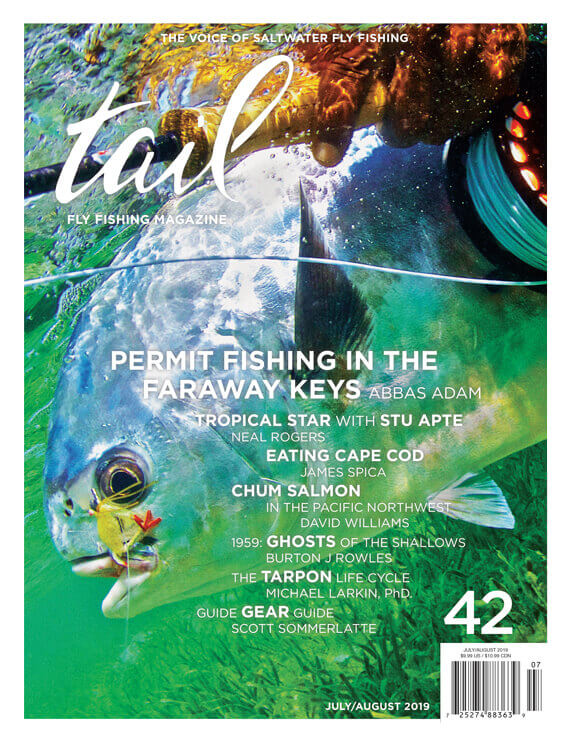by Joseph Ballarini
photos by Rob Kramarz & Brian O’Keefe
previous published in Tail Fly Fishing Magazine - Issue 38 -Nov/Dec 2018
What would make a fish leave the safety of the deep channels to venture into four inches of water, exposing themselves to prey? The cinematic equivalent is the screaming future victim that runs upstairs instead of straight out of the house when being chased by an ax murderer. While we can’t explain movie logic, for fish the answer is quite apparent: food.

Flats species like permit, bonefish, tarpon, redfish, and even giant trevally do a significant percentage of their feeding on the flats, and there are a variety of reasons for this.
There are typically large concentrations of food on the flats. Healthy saltwater flats contain corals, sponges, and grasses which provide habitat for a variety of crustaceans, worms, and small fish species. These prey species make their homes in areas where the water can get very skinny mainly because of the habitat, temperature, amount of sunlight and availability of food for them.
The perpetually moving sargassum carries life in its intricate patchwork and deposits this life in estuaries and flats when the tide falls. Healthy flats can contain an abundance of sea life, and that abundance becomes quite concentrated when the winds and tides are working in concert.
This constriction of the water column makes it more difficult for prey to escape since there is a smaller and more finite space for prey to utilize. For this reason, the energy exerted by the predator species to feed is usually an excellent investment.
In these circumstances, predators require less energy to cover more distance and can move linearly without being concerned about looking for food above or below them. Since there is so little water available for the prey species to hide, the task of finding food is considerably easier, and the result is a higher yield of calories when feeding in skinny waters.
Just like the angler, predatory species have greater visibility on the flats. There is more light than in the deeper channels, and it is easier to spot motion. The predator can detect a fleeing prey species far easier in shallow water than it can in the deeper water, especially over a grassy bottom.
Another factor which is often not considered is scent. Particles in our drinking water are measured in PPM or parts per million, which tells us how much of something is in the water we drink. A congregation of shrimp or crabs will leave a scent trail that attracts predators. That is an oversimplification, but essentially how the food chain works. By parts per million logic, this scent trail will be much stronger and much easier to locate if the water column is measured in inches rather than feet. Predatory species can hone in on a colony of shrimp on the low and pinpoint its exact location with much less effort.
Despite being a relatively dangerous proposition, as there are at least 12 nesting pairs of bald eagles in the Florida Keys, osprey, hawks, merlins and other voracious hunters, predatory species will still venture onto the skinniest of flats. Excluded are adult tarpon and giant trevally as they do not have any predators in the sky and, the latter being known to eat birds. By hunting on the flats, predatory fish species can enjoy greater visibility, a higher concentration of scent, exert less energy, and exit with a higher caloric intake than feeding exclusively in deeper waters. And flats anglers can take advantage of this tendency to target them.



